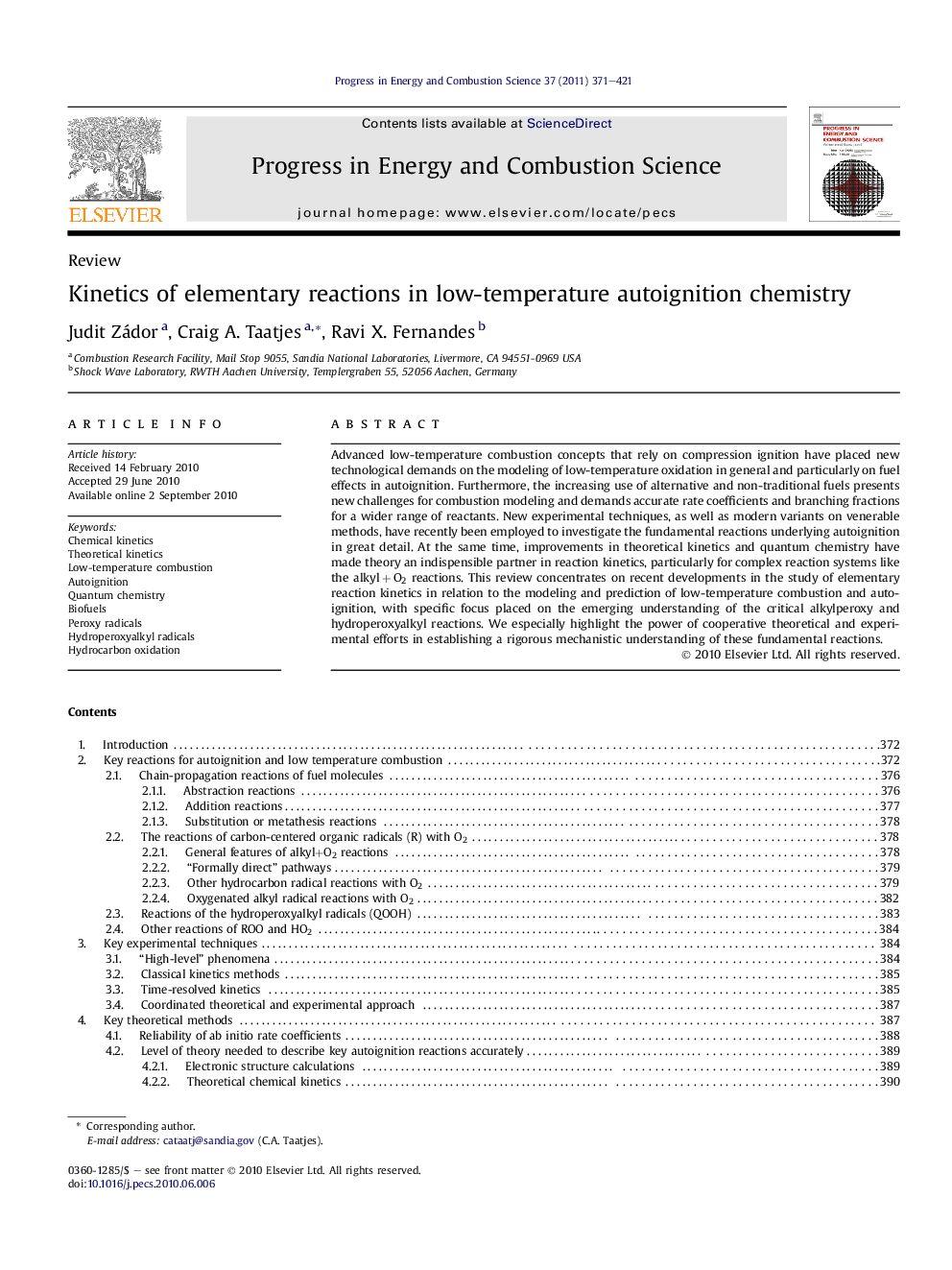| Article ID | Journal | Published Year | Pages | File Type |
|---|---|---|---|---|
| 241762 | Progress in Energy and Combustion Science | 2011 | 51 Pages |
Advanced low-temperature combustion concepts that rely on compression ignition have placed new technological demands on the modeling of low-temperature oxidation in general and particularly on fuel effects in autoignition. Furthermore, the increasing use of alternative and non-traditional fuels presents new challenges for combustion modeling and demands accurate rate coefficients and branching fractions for a wider range of reactants. New experimental techniques, as well as modern variants on venerable methods, have recently been employed to investigate the fundamental reactions underlying autoignition in great detail. At the same time, improvements in theoretical kinetics and quantum chemistry have made theory an indispensible partner in reaction kinetics, particularly for complex reaction systems like the alkyl + O2 reactions. This review concentrates on recent developments in the study of elementary reaction kinetics in relation to the modeling and prediction of low-temperature combustion and autoignition, with specific focus placed on the emerging understanding of the critical alkylperoxy and hydroperoxyalkyl reactions. We especially highlight the power of cooperative theoretical and experimental efforts in establishing a rigorous mechanistic understanding of these fundamental reactions.
